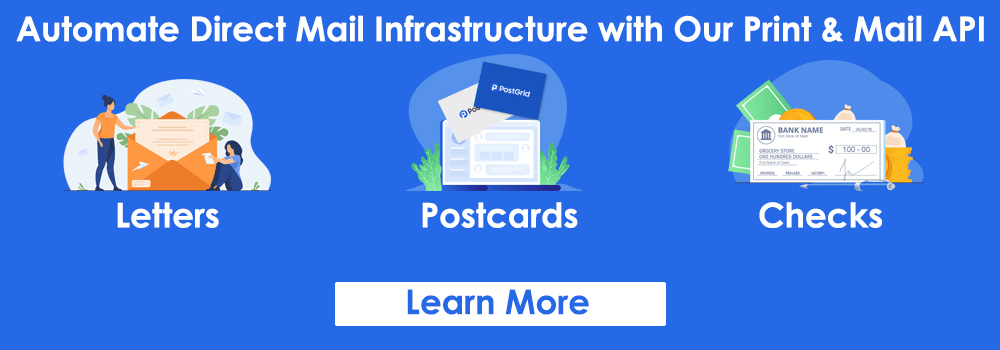Automated KYC Verification
Automated KYC Verification
KYC or Know Your Customer verification is an integral part of financial operations and services. In fact, financial service providers are obliged to run automated KYC verification checks as part of a set of anti-money laundering (AML) regulations they are duty-bound to follow. KYC procedures help financial institutions to ensure that they are compliant with the relevant rules and regulations. Furthermore, it also enables them to prevent fraud and enhance their communications with customers.

To truly have access to all the advantages that the KYC has to offer, your financial business needs to estimate customer identity. Furthermore, they also need to estimate the risk of money laundering based on the data collected. KYC was initially done manually by the companies, but with growing demand and a high number of KYC to be processed, this is no longer a viable option. Automated KYC verification offers a solution to this problem, and it is widely used by financial institutions of all sizes.
Today, every leading financial institution relies on automated KYC verification and advanced data verification tools to streamline its business operations. This article discusses the automated KYC verification solutions for financial institutions. We begin from the basics and explain what KYC is and what its requirements are. We further elaborate on automated address verification and other similar checks that are required for KYC compliance.
What Is KYC Verification?
KYC verification of Know your customer/client is essentially a procedure or set of procedures set up by a financial institution that assesses and determines customer risk. The financial institution goes on to check the information provided by each customer and verify the same. They check the customer’s identity and ensure that he/she is not associated with money-laundering activities. The company verifies the information provided by the customer to make sure that it is not fabricated.
Initially, financial institutions relied on manual KYC checks, but this was an extremely slow and time-consuming process. Furthermore, even after spending valuable time on the KYC process, it was still possible for it to be inaccurate. But things changed for the better after the introduction of automated KYC verification. The automated KYC verification rectified every problem faced by financial institutions in the KYC process and streamlined it never before.
Today, almost all banks and other financial institutions integrate different automated solutions that can help them verify the customer’s identity. More often than not, companies employ more than one smart solution for verification because they are required to analyze different aspects of customer identity. This includes aspects such as the address, ID number, and even the customer’s financial history. With an automated KYC verification, every process is carried out automatically and is aligned with the business’s goals.
As a result of automating your KYC process, you are able to ensure that the automated KYC verification process is virtually flawless. This, in turn, means that your financial institution can effectively protect itself from illegal activities, intentional or otherwise. An automated KYC process also ensures that your business is compliant with the relevant rules and regulations, as the KYC checks are closely related to the AML regulations. It is also worth noting that typically the KYC procedure is an integral part of the AML policy of a bank or financial institution.
Financial Institutions And Their KYC Requirements
It was back in 2001 that a legal requirement to perform KYC verification was introduced with the Patriot Act. It is also worth noting that the Bank Secrecy Act of 1970 was combined with the new act so that the activities of financial institutions could be regulated. Ever since the introduction of the Patriot Act, the KYC procedure for financial institutions has only grown more and more strict.
As a result, financial institutions now have to implement Customer Due Diligence (CDD) and Customer Identification Program (CIP) for their business. When dealing with KYC verification, whether it is an automated one or a manual one, you will still need to get a good understanding of CIP and CDD. Below we discuss in detail what CIP and CDD really mean for your financial organization and its operations.
Customer Identification Program (CIP)
The Customer Identification Program or CIP procedure is essentially a different name for customer identification. Every bank requires their customers to present identifying information such as their name, address, place, and date of birth, etc. The details that need to be collected by a business for their kYI procedure depend on the CIP process established in that specific organization.
Typically the required details for the CIP are collected from the customer by requesting a copy of their driver’s license or passport. The financial organization then cross-checks the information on the ID proof that the customer has provided with the official address database. In most cases, the USPS official address database is used for verifying the customer’s address as it is a highly reliable source.
Customer Due Diligence (CDD)
The Patriot Act of 2001 did not explicitly demand CDD. Customer Due Diligence or CDD is the process of financially analyzing an individual or customer so that you can predict the kind of transactions that they are likely to make. Furthermore, CDD also plays a vital role in detecting suspicious behavior or financial transactions of your customers. In other words, without CDD, a bank can not file or report suspicious activity.
The CDD enables you to assign a risk rating for each of your customers, which is extremely useful for financial service providers. The risk assessment enables you to determine how often or how closely your financial organization needs to monitor a specific account. Similarly, CDD also allows you to find and classify high-risk customers and restrict the services that are offered to them. You should note that both CIP and CDD procedures demand the collection of personal data from the customer and verifying their addresses.
Different Checks For KYC Compliance
Some of you may already have a broad idea about KYC, but not many will be aware of how they are implemented. The first thing you need to know is that there is more than one way you can implement a KYC procedure for your financial institution. As we have mentioned multiple times before, the ideal way to ensure a top-quality KYC procedure for your financial institution is to use automated KYC verification checks. This is necessary because manually carrying out the KYC process is impractical due to the high risk and its potential to compromise regulatory compliance.
Automated Address Verification
Most identity documents or IDs often have the address of their holder, and hence it is relatively convenient to carry out an automated address verification as part of your KYC procedure. The automated address verification enables financial institutions to make sure that the identity provided by a person is authentic. By ensuring that the identity is authentic, you are also able to prevent the customer from using your financial services for any fraudulent or illegal activities.
Running an automated address verification for your banking business is easy and convenient so long as you have the right tools at your disposal. Your best option is to go for a CASS-certified service provider like PostGrid that has access to the USPS official address database. With an advanced address verification system like PostGrid, you can easily verify addresses, and you even have the option to verify the addresses in bulk.
Furthermore, tools such as PostGrid also come equipped with an automated address complete capability, which can greatly enhance the quality of the data you collect. Doing so also streamlines the onboarding process for your business. Additionally, you can integrate PostGrid API with your website and use it to collect only verified data from your users. The autocomplete makes the process extremely convenient for the user, and therefore the chance of conversion also increases.
Intelligent Document Processing
Intelligent document processing is closely related to machine learning. It also involves the use of intelligent character recognition and neutral language processing for effectively extracting data from the documents. The same process can be used to process mortgages, bills, applications, contracts, and much more. This is an important aspect of the KYC procedure, and if it is not streamlined using an automated solution, then it could affect the entire KYC procedure and make it significantly slow or complicated.
As you can see, intelligent document processing is a quintessential part of automated KYC verification, and without it, it is highly unlikely that you can have a streamlined KYC procedure. It enables you to procure all the necessary information from the verification documents submitted by the customer. The documents are then recorded in your system for any future requirements that may come up. Most importantly, it saves you valuable time and makes the KYC procedure significantly faster.
Customer Communications Via Chatbots
Many customers often choose to interact with businesses through online mediums rather than going to the trouble of making a physical visit to their office. This is true for pretty much all businesses out there, and the financial sector isn’t any different. In fact, online mediums are not just an effective point of communication but also a key aspect of the business that facilitates the onboarding of new customers as well.
The best way to ensure that your customers are never left hanging waiting for someone from your side to help them out is to employ a chatbot for your website/mobile app. The chatbots can be given the responsibility to answer common questions that your customers often ask, and they can be available 24/7 at your customer’s service. Furthermore, chatbots also allow you to collect data from potential customers and even explain why the information is necessary to the user.
AI For Due Diligence
Artificial Intelligence or AI has been making its way into our daily lives for quite some time now, so it should come as no surprise that it now plays an important role in the financial sector. However, the applicational use of AI in banking is much more significant than you may think. AI is capable of determining risks and the expected actions based on the customer’s behavioral pattern. With such an immense capability, you can now predict high-risk activities in the financial sector.
Incorporating the use of AI for due diligence can help you streamline your KYC procedure. However, this can have the desired effect only when it is used in tangent with the automated address verification. Using AI, you can get access to advanced customer checks that can prove valuable in helping you stay KYC compliant. In chronological order, the personal data of the customer, such as the address, is verified using an advanced tool like PostGrid, and then the AI automatically monitors the customer activity.
Conclusion
Automated KYC verification has now become an integral part of the financial sector. Financial businesses of all types that sell financial products or services are required to be compliant with the rules and regulations set by the government. In this article, we have discussed what KYC is what its significance is in the financial sector. We have also discussed the different checks for KYC compliance and how true automation can be achieved for your financial business.
One thing is abundantly clear. You need advanced automation tools, including a CASS certified address verification tool like PostGrid for implementing true automation for KYC verification. Tools like PostGrid can access the official address database of USPS to check whether the information furnished by your customers is accurate. Coupling the address verification tool with other advanced solutions like intelligent document processes and AI can help you create the perfect automated KYC verification system for your banking business.
Ready to Get Started?
Start transforming and automating your offline communications with PostGrid
The post Automated KYC Verification appeared first on PostGrid.
Via https://www.postgrid.com/automated-kyc-verification/
source https://postgridplatform.weebly.com/blog/automated-kyc-verification
source https://irenevines.tumblr.com/post/656900210331680768



Comments
Post a Comment